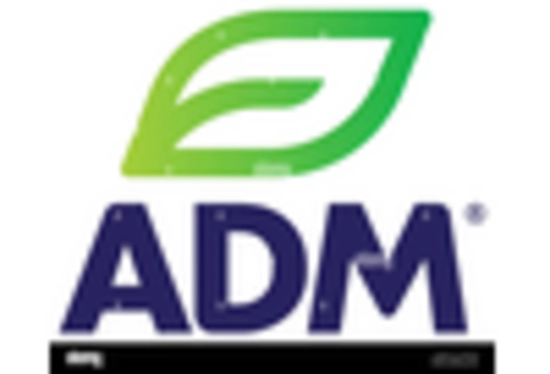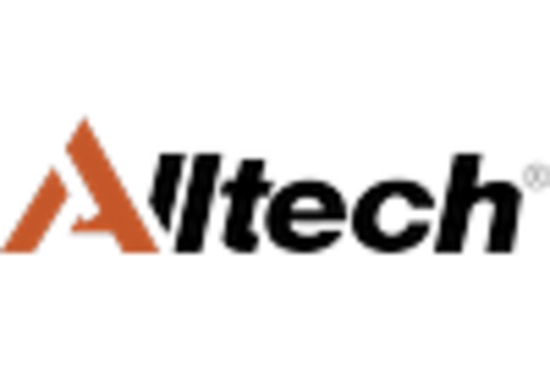Rising Seafood Consumption
The rising consumption of seafood is a significant driver for the Aquafeed Market. As health consciousness increases, consumers are increasingly turning to seafood as a source of lean protein and essential nutrients. This trend is particularly evident in regions where seafood is a dietary staple. Market analysis shows that seafood consumption is projected to increase by approximately 20% over the next decade, leading to heightened demand for aquaculture products. Consequently, aquaculture producers are compelled to enhance their production capabilities, which directly influences the demand for high-quality aquafeed. The Aquafeed Market must adapt to this growing demand by ensuring that feed formulations support optimal growth and health of aquatic species, thereby meeting consumer expectations.
Consumer Awareness and Education
Consumer awareness regarding the benefits of aquaculture and the nutritional value of seafood is increasingly influencing the Aquafeed Market. As consumers become more informed about food sources, there is a growing demand for transparency in aquaculture practices. This awareness drives producers to adopt better feeding practices and improve the quality of aquafeed. Educational campaigns highlighting the health benefits of seafood consumption are also contributing to increased demand. Market Research Future indicates that regions with higher consumer awareness are witnessing a surge in seafood sales, which directly impacts aquaculture production levels. Consequently, the Aquafeed Market must respond to this trend by ensuring that feed products not only meet nutritional standards but also align with consumer expectations for quality and sustainability.
Sustainable Aquaculture Practices
The increasing emphasis on sustainable aquaculture practices is a pivotal driver for the Aquafeed Market. As environmental concerns rise, aquaculture operations are adopting practices that minimize ecological impact. This shift is reflected in the growing demand for sustainable feed ingredients, which are derived from renewable sources. According to recent data, the market for sustainable aquafeed is projected to grow at a compound annual growth rate of over 10% in the coming years. This trend not only addresses environmental issues but also aligns with consumer preferences for responsibly sourced seafood. Consequently, the Aquafeed Market is likely to witness a surge in innovation as companies strive to develop feeds that meet sustainability criteria while maintaining nutritional value.
Regulatory Support for Aquaculture
Regulatory frameworks supporting aquaculture development are playing a crucial role in shaping the Aquafeed Market. Governments worldwide are recognizing the importance of aquaculture in food security and economic development. As a result, policies that promote sustainable aquaculture practices and provide financial incentives for feed production are being implemented. For example, certain regions have introduced subsidies for the use of environmentally friendly feed ingredients. This regulatory support not only encourages investment in aquaculture but also drives innovation in feed formulation. Market data suggests that regions with supportive regulatory environments are experiencing faster growth in aquaculture production, which in turn boosts the demand for aquafeed. The Aquafeed Market is thus positioned to benefit from these favorable policies, fostering a more sustainable and productive aquaculture sector.
Technological Innovations in Feed Production
Technological advancements in feed production are transforming the Aquafeed Market. Innovations such as precision nutrition, automated feeding systems, and advanced processing techniques are enhancing feed efficiency and reducing waste. For instance, the integration of artificial intelligence in feed formulation allows for tailored nutrition that meets the specific needs of various aquatic species. This not only improves growth rates but also optimizes feed conversion ratios. Market data indicates that the adoption of such technologies could lead to a reduction in feed costs by up to 15%, thereby increasing profitability for aquaculture producers. As these technologies become more accessible, the Aquafeed Market is expected to expand, driven by the need for more efficient and effective feeding solutions.

















Leave a Comment